Disease Stage-Specific Pathogenicity of CD138 (Syndecan 1)-Expressing T Cells in Systemic Lupus Erythematosus
- PMID: 32849532
- PMCID: PMC7401833
- DOI: 10.3389/fimmu.2020.01569
Disease Stage-Specific Pathogenicity of CD138 (Syndecan 1)-Expressing T Cells in Systemic Lupus Erythematosus
Abstract
CD138 (syndecan 1), a member of the heparan-sulfate proteoglycan family, regulates diverse biological responses by interacting with chemokines, cytokines, growth factors, and adhesion molecules. Expression of CD138 has been detected on T cells from both healthy and sick mice mimicking systemic lupus erythematosus (SLE) disease. However, the characteristics and the role of CD138+ T cells in SLE pathogenesis remain largely unknown. We analyzed the lupus-prone MRL/Lpr mice and the control MRL/MpJ strain as well as the common laboratory strains Balb/c, and C57BL/6 for CD138-expression and found that only the MRL/Lpr strain harbored TCRβ+CD138+ cells in various organs. The frequency of TCRβ+CD138+ cells progressively expanded in MRL/Lpr mice with age and correlated with disease severity. Majority of the TCRβ+CD138+ cells were CD4 and CD8 double-negative and 20% were CD4. At least a portion of TCRβ+CD138+ cells originated from CD4+ cells because substantial number of CD4+TCRβ+CD138- cells expressed CD138 after in vitro cultivation. Compared to TCRβ+CD138- cells, TCRβ+CD138+ cells exhibited central memory (Tcm) phenotype with reduced ability to proliferate and produce the cytokines IFNγ and IL-17. When co-cultured with B cells, the ability of TCRβ+CD138+ cells to promote plasma cell formation and autoreactive antibody production was dependent on the presence of autoantigen, CD4 co-receptor expression and cell-to-cell contact. Surprisingly, adoptively transferred TCRβ+CD138+ T cells slowed down disease progression in young recipient MRL/Lpr mice but had the opposite effect when DNA was co-administered with TCRβ+CD138+ T cells or when TCRβ+CD138+ cells were transferred to older MRL/Lpr mice with established disease. Thus, CD138-expressing T cells with Tcm phenotype enhance disease progression in SLE by rapidly activating autoreactive B cells when self-antigens are exposed to the immune system.
Keywords: MRL/Lpr mouse; T cells; immunopathogenesis; lupus; syndecan-1.
Copyright © 2020 Liu, Takeda and Akkoyunlu.
Figures

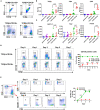
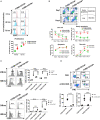
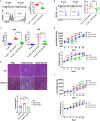
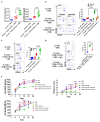
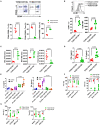
Similar articles
-
Circulating CD138 enhances disease progression by augmenting autoreactive antibody production in a mouse model of systemic lupus erythematosus.J Biol Chem. 2021 Sep;297(3):101053. doi: 10.1016/j.jbc.2021.101053. Epub 2021 Aug 6. J Biol Chem. 2021. PMID: 34364875 Free PMC article.
-
Antagonizing miR-7 suppresses B cell hyperresponsiveness and inhibits lupus development.J Autoimmun. 2020 May;109:102440. doi: 10.1016/j.jaut.2020.102440. Epub 2020 Mar 20. J Autoimmun. 2020. PMID: 32201226
-
Up-regulation of transcription factor Blimp1 in systemic lupus erythematosus.Mol Immunol. 2013 Dec;56(4):574-82. doi: 10.1016/j.molimm.2013.05.241. Epub 2013 Aug 1. Mol Immunol. 2013. PMID: 23911415
-
The central and multiple roles of B cells in lupus pathogenesis.Immunol Rev. 1999 Jun;169:107-21. doi: 10.1111/j.1600-065x.1999.tb01310.x. Immunol Rev. 1999. PMID: 10450512 Review.
-
Dysregulated Lymphoid Cell Populations in Mouse Models of Systemic Lupus Erythematosus.Clin Rev Allergy Immunol. 2017 Oct;53(2):181-197. doi: 10.1007/s12016-017-8605-8. Clin Rev Allergy Immunol. 2017. PMID: 28500565 Review.
Cited by
-
Lymphocytes Change Their Phenotype and Function in Systemic Lupus Erythematosus and Lupus Nephritis.Int J Mol Sci. 2024 Oct 10;25(20):10905. doi: 10.3390/ijms252010905. Int J Mol Sci. 2024. PMID: 39456692 Free PMC article. Review.
-
T-follicular regulatory cells expand to control germinal center plasma cell output but fail to curb autoreactivity.iScience. 2024 Sep 4;27(10):110887. doi: 10.1016/j.isci.2024.110887. eCollection 2024 Oct 18. iScience. 2024. PMID: 39319261 Free PMC article.
-
Syndecans in hematopoietic cells and their niches.Am J Physiol Cell Physiol. 2024 Aug 1;327(2):C372-C378. doi: 10.1152/ajpcell.00326.2024. Epub 2024 Jun 24. Am J Physiol Cell Physiol. 2024. PMID: 38912739 Free PMC article. Review.
-
Celastrol ameliorates lupus by promoting apoptosis of autoimmune T cells and preventing autoimmune response in MRL/lpr mice.Lupus Sci Med. 2024 Mar 11;11(1):e001057. doi: 10.1136/lupus-2023-001057. Lupus Sci Med. 2024. PMID: 38471722 Free PMC article.
-
CD138 promotes the accumulation and activation of autoreactive T cells in autoimmune MRL/lpr mice.Exp Ther Med. 2023 Oct 24;26(6):568. doi: 10.3892/etm.2023.12267. eCollection 2023 Dec. Exp Ther Med. 2023. PMID: 37954119 Free PMC article.
References
-
- Akahoshi M, Nakashima H, Tanaka Y, Kohsaka T, Nagano S, Ohgami E, et al. . Th1/Th2 balance of peripheral T helper cells in systemic lupus erythematosus. Arthritis Rheum. (1999) 42:1644–8. 10.1002/1529-013119990842:81644::AID-ANR123.0.CO;2-L - DOI - PubMed
MeSH terms
Substances
LinkOut - more resources
Full Text Sources
Medical
Research Materials

